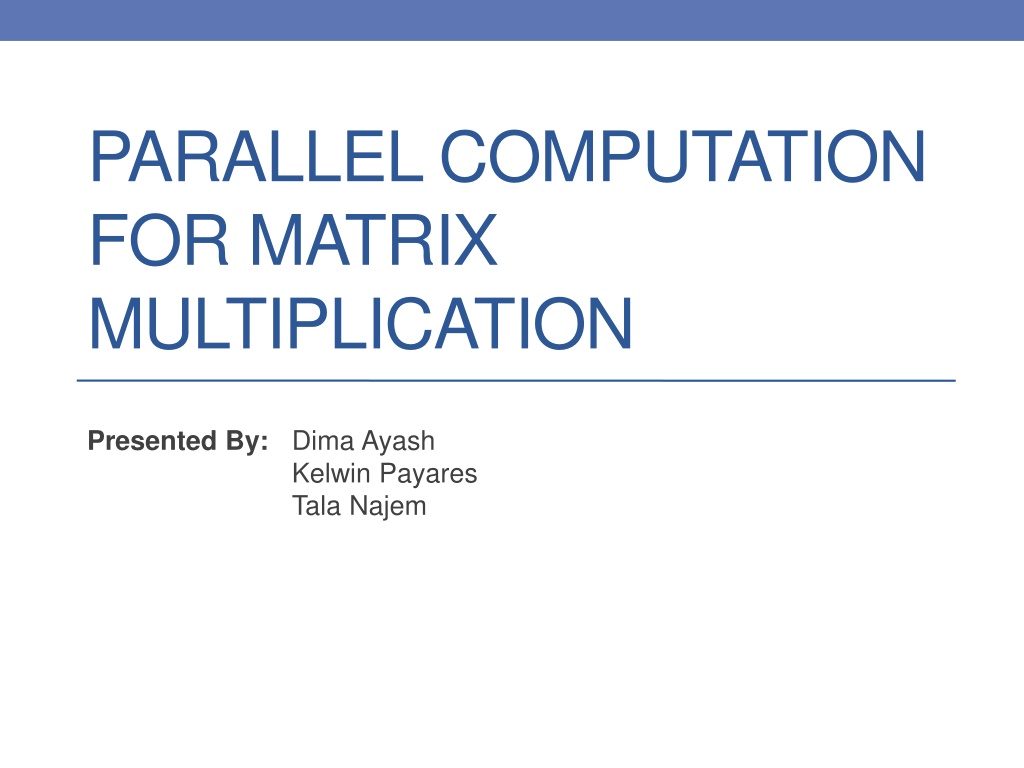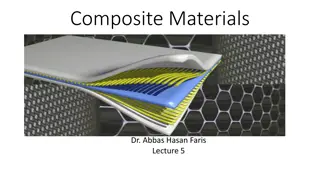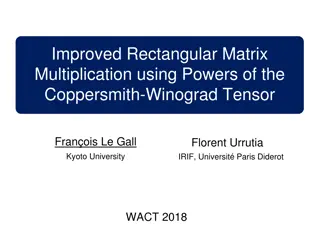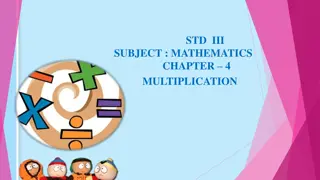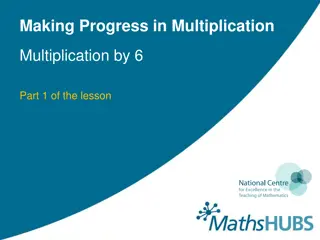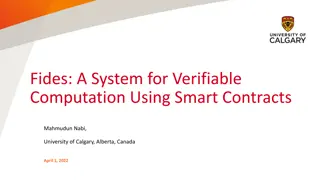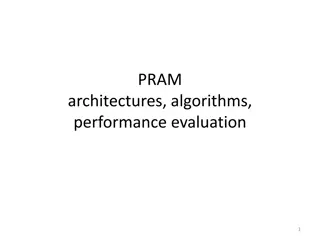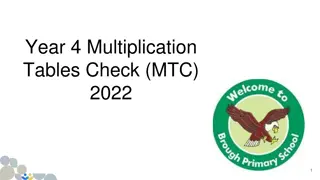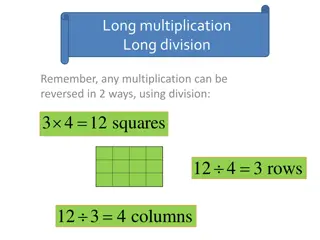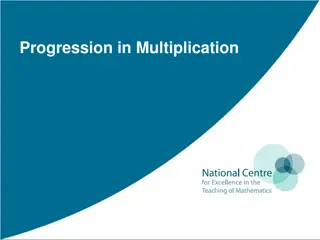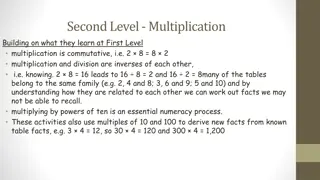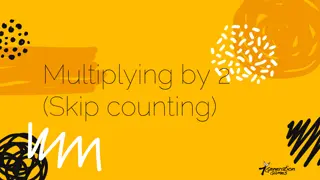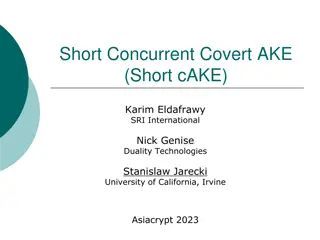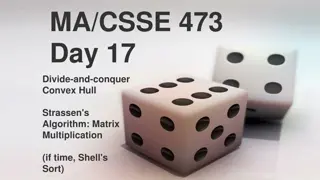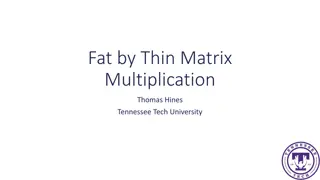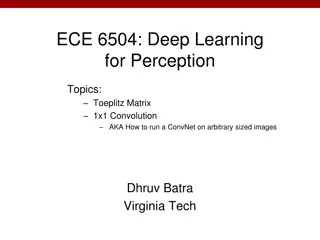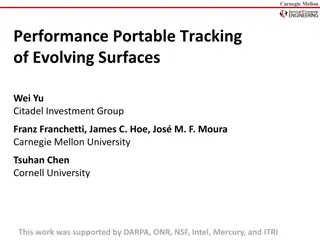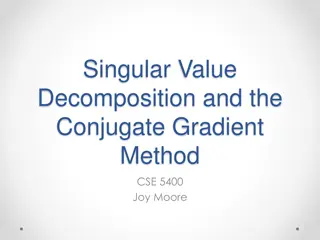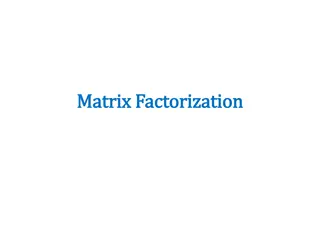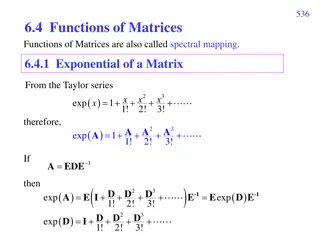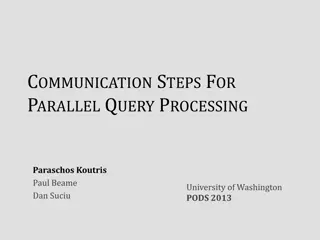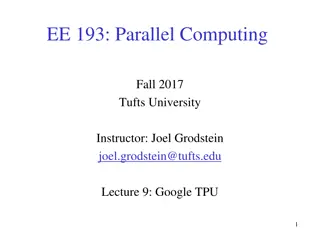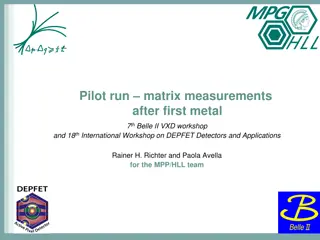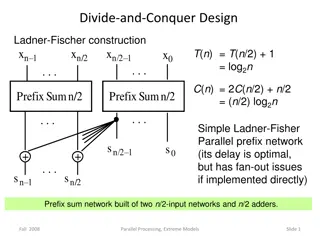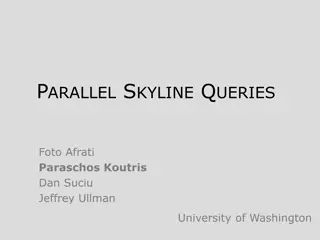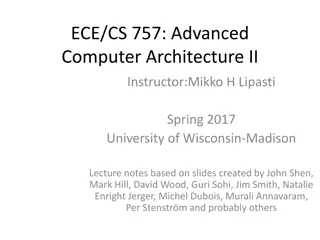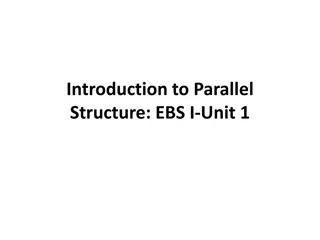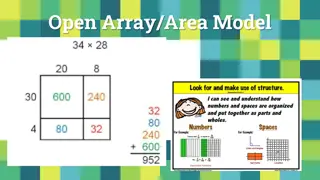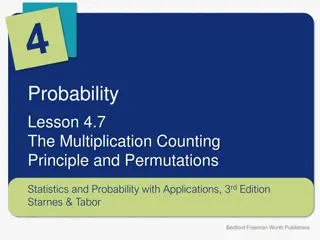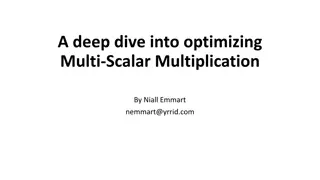Parallel Computation for Matrix Multiplication
Matrix multiplication is a fundamental operation with diverse applications across scientific research. Parallel computation for matrix multiplication involves distributing the computational workload over multiple processors, improving efficiency. Different algorithms have been developed for multiplying matrices on various hardware setups. This includes partitioning matrices into submatrices to optimize the calculation process. Understanding parallel computation for matrix multiplication is essential for enhancing performance in computational tasks.
Download Presentation

Please find below an Image/Link to download the presentation.
The content on the website is provided AS IS for your information and personal use only. It may not be sold, licensed, or shared on other websites without obtaining consent from the author. Download presentation by click this link. If you encounter any issues during the download, it is possible that the publisher has removed the file from their server.
E N D
Presentation Transcript
PARALLELCOMPUTATION FOR MATRIX MULTIPLICATION Presented By: Dima Ayash Kelwin Payares Tala Najem
Matrix Multiplication Matrix operations, like matrix multiplication, are commonly used in almost all areas of scientific research. Applications of matrix multiplication in computational problems are found in many fields including scientific computing and pattern recognition and in seemingly unrelated problems such counting the paths through a graph (graph theory), signal processing, digital control and is such a central operation in many numerical algorithms . Many different algorithms have been designed for multiplying matrices on different types of hardware, including parallel and distributed systems, where the computational work is spread over multiple processors (perhaps over a network).
C = A B... MATH Let A and B be matrices of size n m and m l, respectively. The product matrix C = A * B is an n l matrix, for which elements are defined as follows: cij = ?=0 ? 1aik .bkj where 0 i < n, 0 j < l
Sequential Algorithm The previous algorithm performs the matrix C rows calculation sequentially At every iteration of the outer loop on i variable a single row of matrix A and all columns of matrix B are processed A B C = We can see that there are m l inner products calculated to perform the matrix multiplication The complexity of the matrix multiplication is O(mnl) & assuming that n=m=l O(??).
Partitioning into Submatrices Matrix is divided into S2 submatrices. Each submatrix has n/s n/s elements. Using the notation Ap,q as the sbmatrix in submatrix row p and submatrix column q: For (p=0; p<s; p++) For (q=0; q<s; q++){ Cp,q=0; /*clear elements of sumbatrix*/ For (r=0; r<m ; r++) /*submatrix multiplication and add to accumulating submatrix*/ Cp,q= Cp,q + Ap,r * Br,q; } The line: Cp,q= Cp,q + Ap,r * Br,q means multiply submatrix Ap,r and Br,q using matrix multiplication and add to submatrix Cp,q using matrix addition.
Cannon Algorithm This is a memory efficient algorithm. Both n matrices A & B are partitioned among P processors. B A
Cannon Algorithm Cont. 1. Initially processor Pi,j has elements ai,j and bi,j(0 I < n, 0 j < n)
Cannon Algorithm Cont. 2. Elements are moved from their initial position to an aligned position. The complete ith row of A is shifted i places left and the complete jth column of B is shifted j places upward.
Cannon Algorithm Cont. 3. Each processor Pi,j multiply its elements. 4. The ith row of A is shifted one place left, and the jth column of B is shifted one place upward.
Cannon Algorithm Cont. 5. Each processor Pi,j multiplies its elements brought to it and adds the results to the accumulating sum. 6. Step 4 and 5 are repeated until the final result is obtained (n-1 shifts with n rows and n columns of elements).
Cannon Algorithm Cont. Initially the matrix A Initially the matrix B Row 0 is unchanged. Column 0 is unchanged. Row 1 is shifted 1 place left. Column 1 is shifted one place up. Row 2 is shifted 2 places left. Column 2 is shifted 2 places up. Row 3 is shifted 3 places left. Column 3 is shifted 3 places up.
Fox Algorithm Both n matrices A & B are partitioned among P processors so that each processor initially stores ? ? ? ? The algorithm uses one to all broadcasts of the blocks of matrix A in processor rows, and single-step circular upwards shifts of the blocks of matrix B along processor columns. Initially, each diagonal block Ai,i is selected for broadcast .
Fox Algorithm Cont. Repeated ? times: 1. Broadcast Ai,i to all processors in the row. 2. Multiply block of A received with resident block of B 3. Send the block of B up one step (with wraparound) 4. Select block Ai,(j+1)mod? (where Ai,j is the block broadcast in the previous step) and broadcast to all processors in row. 5. Got to 2.
Fox Algorithm Step 1 Initially broadcast the diagonal elements of A
Fox Algorithm Step 2 Broadcast the next element of A in rows, shift B in column and perform multiplication
Fox Algorithm Step 3 Broadcast the next element of A in rows, shift B in column and perform multiplication
Fox Algorithm Step 4 Broadcast the next element of A in rows, shift B in column and perform multiplication
Fox Algorithm Conclusion Shifting is over. Stop the iteration. Conclusion Fox algorithm is memory efficient method. Communication overhead is more than Cannon algorithm.
Parallel Algorithm for Dense Matrix Multiplication Two square matrices A and B of size n that have to be multiplied: 1. Partition these matrices in square blocks p, where p is the number of processes available. 2. Create a matrix of processes of size p1/2 x p1/2 so that each process can maintain a block of A matrix and a block of B matrix. 3. Each block is sent to each process, and the copied sub blocks are multiplied together and the results added to the partial results in the C sub-blocks. 4. The A sub-blocks are rolled one step to the left and the B sub-blocks are rolled one step upward. 5. Repeat steps 3 & 4 ( ? ) times
Parallel Algorithm for Dense Matrix Multiplication Cont.
Example Matrices to be multiplied:
Example Cont. These matrices are divided into 4 square blocks as follows:
Example Cont. Matrices A and B after the initial alignment.
Example Cont. Local matrix multiplication
Example Cont. Shift A one step to left, shift B one step up
Example Cont. Local matrix multiplication.
References Parallel Computing Chapter 8 Dense Matrix Multiplication, Jun Zhang Department of Computer Science University of Kentucky. Parallel Programming Application: Matrix Multiplication, UYBHM Yaz al stay 15 26 Haziran 2009. Parallel Algorithm for Dense Matrix Multiplication; Ortega, Patricia 2012.
